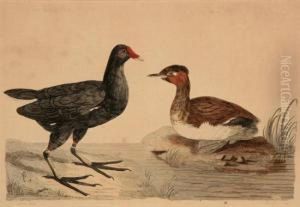Peter, Paillou Jnr. Paintings
Peter Paillou Jnr. is an artist whose life details, including his birth and death years, are not widely documented, making it challenging to provide a comprehensive biography. However, his contribution to the field of art, particularly in the 18th century, can still be acknowledged through the legacy of his works. Peter Paillou Jnr. was part of a lineage of artists, being the son of Peter Paillou the Elder, a known painter who was active in the same period. This familial background suggests that Paillou Jnr. would have been immersed in an artistic environment from an early age, potentially receiving training and mentorship from his father.
The Paillou family is associated with the production of fine bird and natural history illustrations, a genre that was highly popular and valued during the 18th century for both its artistic merit and contribution to the scientific understanding of the natural world. Peter Paillou Jnr., following in his father's footsteps, likely focused on similar subjects, contributing to the pool of knowledge and artistic representation of flora and fauna of the time.
Despite the lack of specific details about his life, Peter Paillou Jnr.'s existence in the realm of art history is inferred through the stylistic similarities and thematic continuities seen in works attributed to him, compared to those of his father. This suggests a transmission of technique and subject preference that underscores the familial artistic legacy. The works attributed to the Paillou family, including those by Peter Paillou Jnr., are important for understanding the development of natural history illustration in the 18th century, a period marked by a burgeoning interest in classification and the visual documentation of the natural world.
In sum, while specific biographical details about Peter Paillou Jnr. remain elusive, his contribution to the art world, particularly in the realm of natural history illustration, marks him as a figure of interest in the study of 18th-century art. His works, alongside those of his father, provide valuable insight into the artistic techniques and interests of the time, contributing to our understanding of the period's cultural and scientific explorations.

